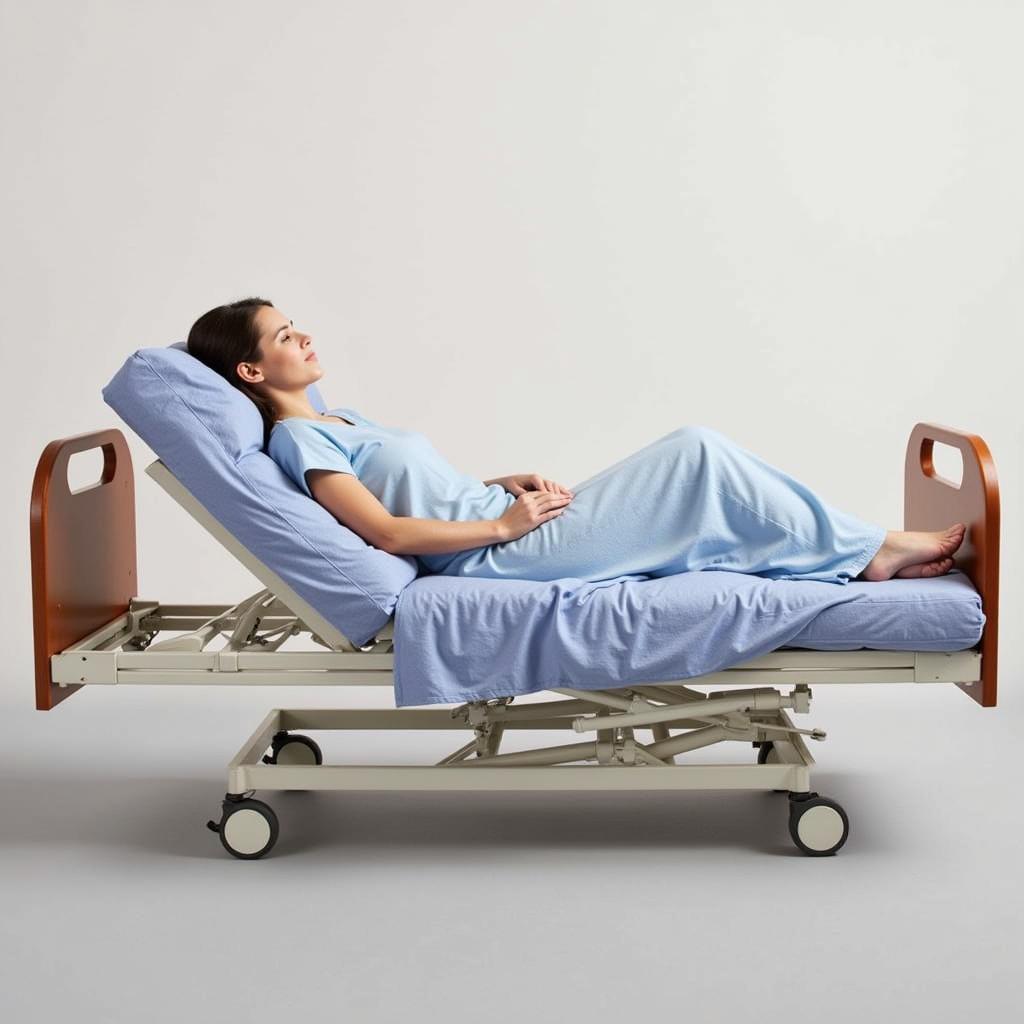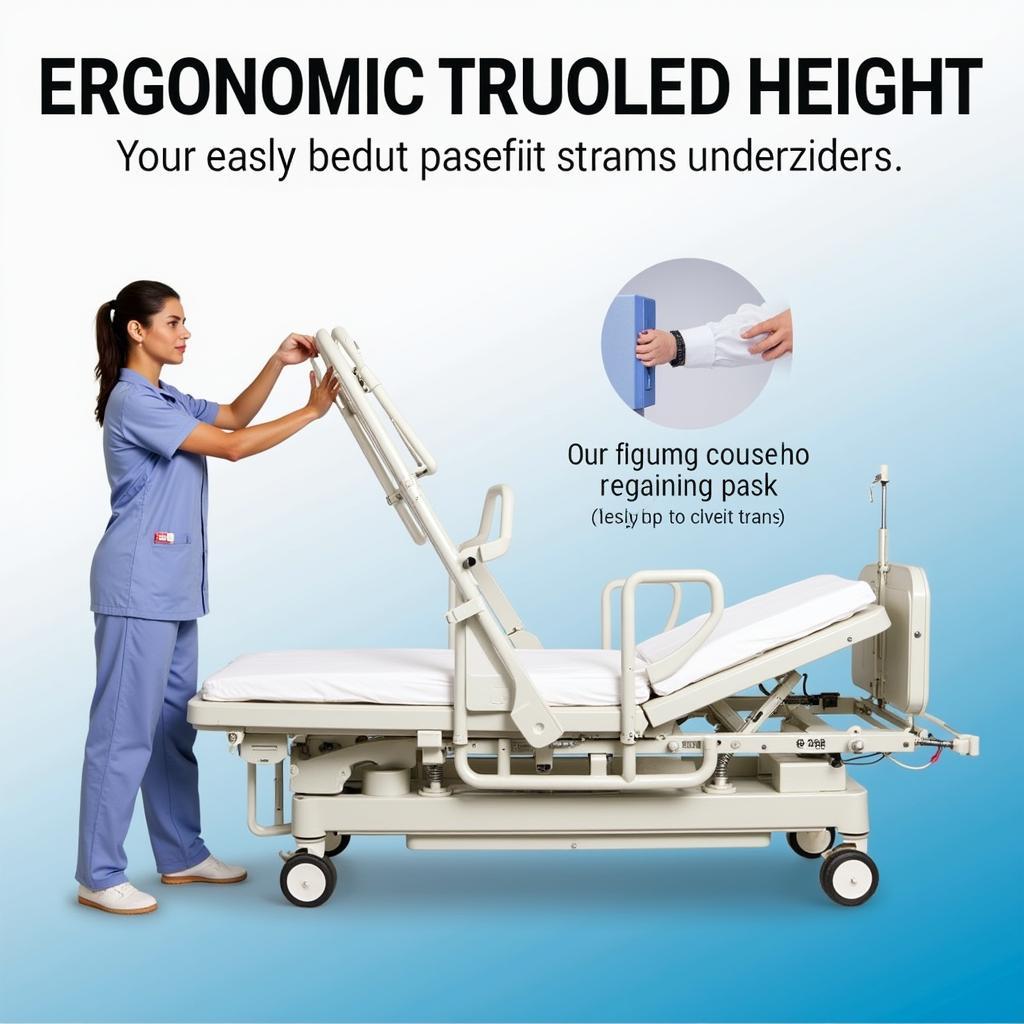High Low Hospital Beds are essential for providing comfortable and safe patient care. They allow for easy adjustments to accommodate various medical needs and improve patient independence. This guide explores the benefits, features, and selection process for these crucial pieces of medical equipment.
 High Low Hospital Bed Enhancing Patient Comfort
High Low Hospital Bed Enhancing Patient Comfort
Understanding the Importance of a High Low Hospital Bed
High low hospital beds, also known as adjustable beds, play a pivotal role in modern healthcare. Their ability to raise and lower the bed height significantly improves patient safety, reduces caregiver strain, and enhances patient comfort. For patients recovering from surgery or with limited mobility, these beds offer crucial support for everyday tasks. Imagine a patient needing to get out of bed after hip surgery. A high low bed allows them to lower the bed to a safe height, minimizing the risk of falls. Similarly, caregivers benefit from the adjustable height, making it easier to assist patients with hygiene and other essential tasks.
 Hospital Bed Height Adjustment for Caregiver Ease
Hospital Bed Height Adjustment for Caregiver Ease
Key Features of High Low Hospital Beds
High low hospital beds offer a variety of features designed to cater to diverse patient needs. These include:
- Height Adjustment: This core feature allows for customized positioning, promoting both patient and caregiver safety.
- Head and Foot Adjustments: These adjustments enable personalized comfort and support various medical conditions.
- Side Rails: Side rails provide added security and prevent falls, particularly for patients with cognitive impairment.
- Trendelenburg and Reverse Trendelenburg Positioning: These positions aid in specific medical procedures and can improve circulation.
- Central Locking System: A central locking system ensures stability and prevents accidental movement.
Choosing the Right High Low Hospital Bed
Selecting the appropriate high low hospital bed requires careful consideration of various factors, including:
- Patient Needs: The patient’s medical condition, mobility level, and overall health should be primary factors in the decision-making process. For example, bariatric patients require beds with higher weight capacities.
- Caregiver Needs: The bed should be easy for caregivers to operate and adjust, minimizing strain and maximizing efficiency. You can find resources about this and other hospital equipment by searching for a list of Massachusetts hospitals.
- Budget: High low hospital beds come in a range of prices, so it’s important to find one that fits your budget while meeting the patient’s needs. Check out Stryker hospital bed price for a reference point.
- Space Constraints: Consider the available space in the patient’s room to ensure the bed fits comfortably.
What is the average weight capacity of a high low hospital bed?
Most high low hospital beds can support between 300 to 500 pounds. Bariatric beds can accommodate significantly more weight.
How often should a high low hospital bed be serviced?
Regular maintenance is recommended, typically every six months to a year, depending on usage.
Conclusion
Investing in a high low hospital bed can greatly improve the quality of care for patients. By considering the features, patient needs, and budget, you can select the ideal bed to enhance comfort, safety, and overall well-being. The ability to easily adjust the bed’s height is a key advantage, reducing the risk of falls and simplifying caregiver tasks. Ultimately, the right high low hospital bed contributes to a more positive and effective healing environment. For those interested in hospital management software, consider looking into hospitality HR software.
FAQ
- What is the primary benefit of a high low hospital bed? Improved patient and caregiver safety.
- What are some key features to look for? Height adjustment, head and foot adjustments, side rails.
- How do I choose the right bed for a patient? Consider the patient’s needs, caregiver needs, budget, and space constraints.
- Are there different types of high low beds? Yes, including bariatric beds and those with specialized positioning features.
- Where can I find more information on hospital equipment? Try searching for information on different floors in the hospital to understand specific equipment needs.
- What is the typical volume of a hospital pitcher ml? This can vary, but standard sizes are often around 1 liter (1000 ml).
- Where can I learn more about hospital staffing and management tools? Consider exploring information on hospitality HR software for relevant resources.
If you need assistance, please contact us at Phone Number: 02437655121, Email: [email protected] Or visit us at: No. 298 Cau Dien Street, Minh Khai, Bac Tu Liem, Hanoi, Vietnam. We have a 24/7 customer service team.